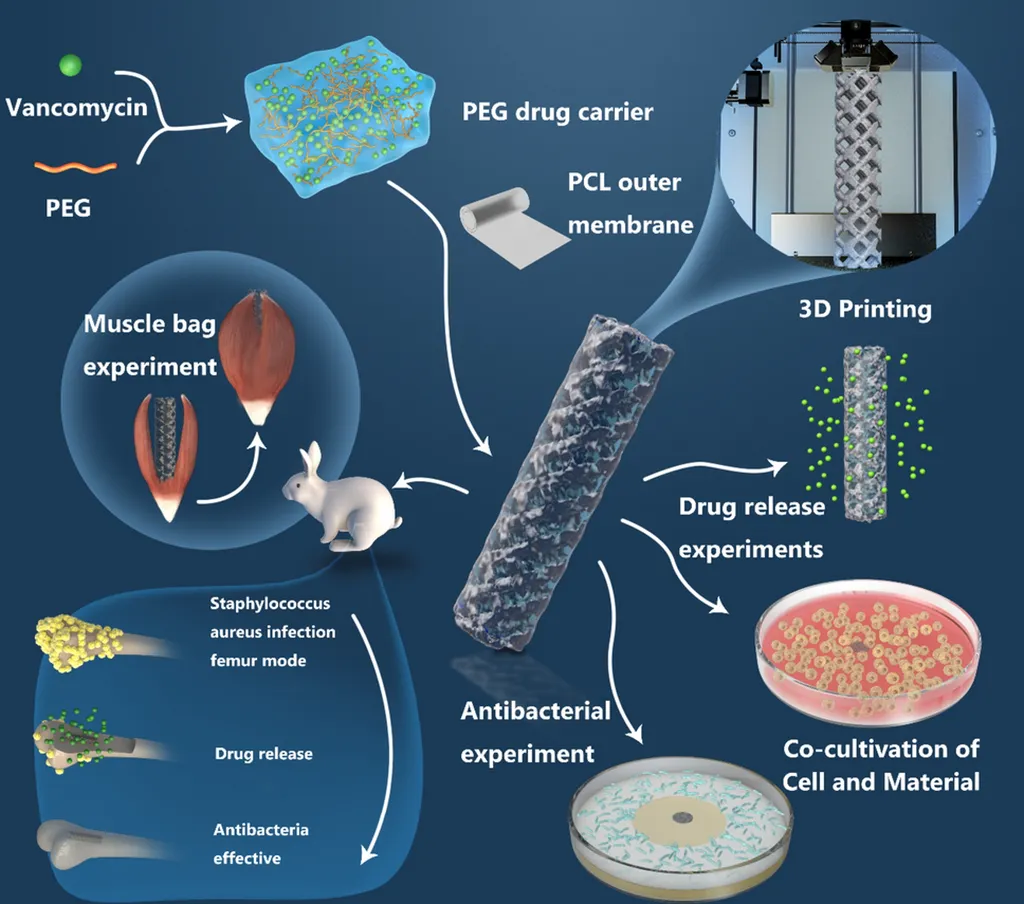In the realm of advanced materials and biomedical engineering, a groundbreaking study has emerged that could revolutionize the way we approach antibacterial drug delivery systems. Researchers from the University of Chemistry and Technology, Prague, led by Anna Knaislová from the Department of Metals and Corrosion Engineering, have developed a novel approach using sol-gel TiO2-based coatings on 3D-printed porous titanium structures. This innovative technique not only enhances bioactivity but also significantly boosts antibacterial properties, opening new avenues for medical and energy sector applications.
The study, published in Applied Surface Science Advances (Povrchová věda pokročilé), focuses on the preparation and characterization of sol-gel TiO2-based coatings containing hydroxyapatite and silver. These coatings were applied to 3D-printed porous gyroid and dodethick structures, with standard wrought Ti-Al-V alloy rods serving as a reference. The microstructural analysis revealed that while the coatings on the reference samples were homogeneous and well-adhered, those on the porous structures exhibited some localized cracking due to the complex geometry.
One of the most compelling aspects of this research is its potential impact on the energy sector. “The enhanced bioactivity and antibacterial properties of these coatings can be leveraged in various industrial applications, including water treatment and energy production, where bacterial growth can be a significant issue,” explains Knaislová. The ability to inhibit bacterial growth nearly 100% in some cases, as demonstrated against Escherichia coli, is a game-changer.
The bioactivity of the coatings was confirmed through standard in vitro simulated body fluid tests, which showed hydroxyapatite precipitation on HA-containing coatings. This is crucial for biomedical applications, where promoting bone growth and integration is essential. The antibacterial properties were assessed against Escherichia coli, demonstrating nearly 100% bacterial inhibition for Ag-containing coatings. Cytotoxicity tests with L929 fibroblast cells indicated that coatings with lower Ag concentrations were non-toxic, while higher concentrations resulted in reduced cell viability, particularly in gyroid structures.
The implications of this research are vast. “This study not only advances our understanding of sol-gel coatings but also paves the way for innovative applications in both medical and industrial sectors,” says Knaislová. The ability to tailor the properties of these coatings for specific applications could lead to significant advancements in the energy sector, where bacterial contamination can pose serious challenges.
As the world continues to seek sustainable and efficient solutions, the development of these advanced coatings represents a significant step forward. The research team’s findings, published in Applied Surface Science Advances, offer a glimpse into the future of materials science and its potential to transform various industries. The study’s thorough structural and biological characterization provides a robust foundation for further exploration and development, promising a new era of innovation in the field.

